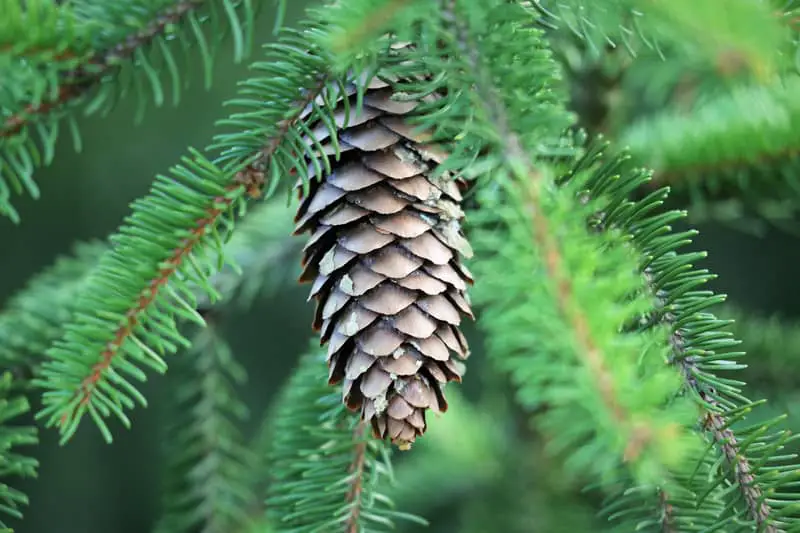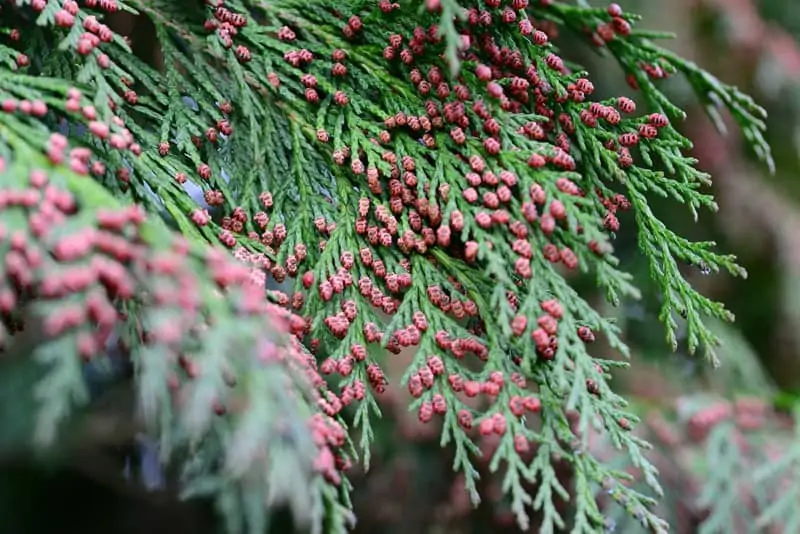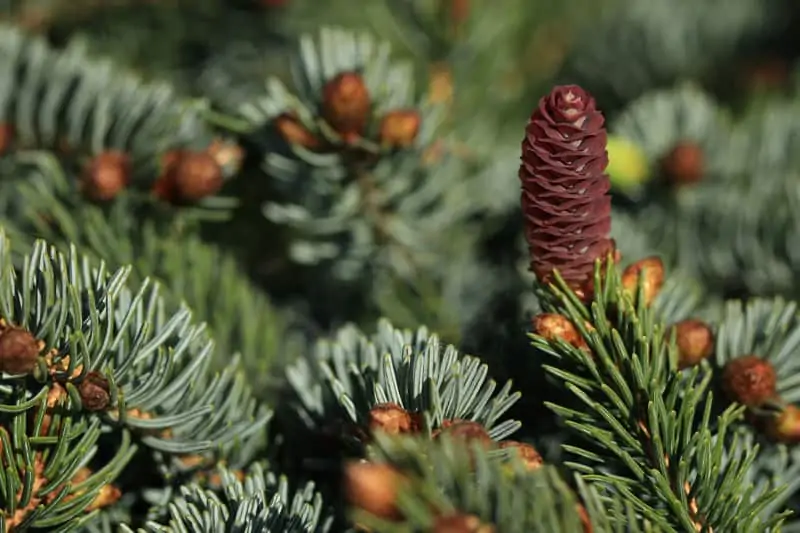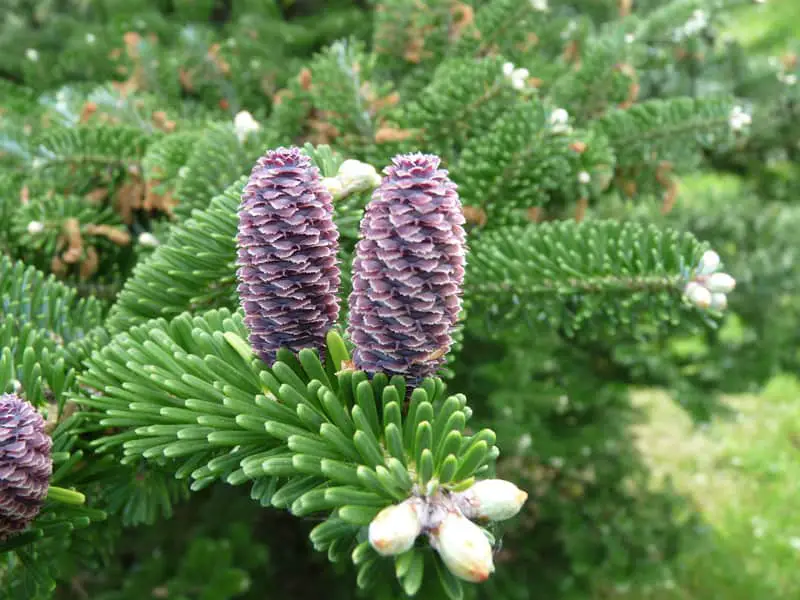Table of Contents
The fir bonsai tree is as rare as its genus and is not really that suitable to bonsai. The species is also considered to be more appropriate for advanced bonsai enthusiasts. If you have been thinking of growing this tree yourself, there are several important pieces of information you need to know about the fir bonsai tree.
| Species | Pinaceae |
| Scientific Name | Abies |
| Average Height | 50.00 to 70.00 feet |
| Average Spread | 15.00 to 25.00 feet |
| Origin Country | North America |
| Flower Bloom Time | Non-flowering |
| Flower | Non-flowering |
| Water | Medium |
| Sunlight | Full Sun to Part Shade |
| Maintenance | Medium |
Can we bonsai Abies balsamea?
Yes, it is possible to bonsai the abies balsamea or fir. However, this is not really the best option to consider. This is because the abies species is often unsuitable for bonsai purposes. But if you plan to do so, you have to take note that this particular type of bonsai is something that only advanced bonsai enthusiasts should undertake. Only those who have adequate experience can keep up with the requirements of the species.
Abies balsamea has horizontal branching and a pyramidal shape, with its lower branches drooping to the ground. Firs in the wild grow from 40 to 60 feet. It has wonderful blue-gray foliage that looks similar to that of Colorado blue spruce. These trees also look like spruce trees. The only difference is that the cones of firs are erect, while the cones of spruces hang down.
Fir bonsai history

The history of fir bonsai is rather unknown, but it seems that it is still a bit short compared to that of other bonsai trees. Abies makes up a genus of around 50 species of evergreen conifer that belong to the Pinaceae family.
Fir is the common name for the species, taken from “fyri,” an Old Norse word, or “fyr,” an old Danish word. You can find the abies species abundantly in the mountainous areas of Asia, Europe, North Africa, and North America.
Fir bonsai scientific name

The scientific name of fir abies is pronounced as a-bees. Fir trees have a close relation to the cedrus or cedar genus.
Fir bonsai care
Before you learn how to plant and grow your fir bonsai tree, there are several basics you need to know when it comes to the requirements and best conditions on how to care for it.
Fir bonsai temperature
Firs are evergreens that prefer cold climates, even though many species recommended by the books for bonsai are relatively tolerant to heat. Abies bonsai also show a preference for the cold climates of the mountainous parts of Asia, Europe, North Africa, and North America.
Fir bonsai fertilizer
Feeding is important to ensure that your fir bonsai can grow. Typically, feeding must be done once new foliage shows and should be carried on until autumn. Autumn and spring are the most ideal times for feeding your bonsai.
Experts, however, don’t agree on how frequent feeding should be. Others recommend feeding every two weeks, while others suggest the monthly application of fertilizer. Firs prefer slightly acid soil, which means the tree also appreciates the sporadic dose of Miracid.
Fir bonsai pruning/trimming
You have to pinch back new shoots throughout growth. It is best to wire your fir in spring. It is also notably versatile and is also trainable in many styles.
Fir bonsai repotting
Fir bonsai trees should be acclimated to pot culture. This means you need to plant them in oversizedpots and must be gradually introduced into smaller pots. You can transplant them either in autumn or spring and may require it every couple of years.
Fir bonsai pests and diseases

Pests are generally nonserious, but some may cause damages. Balsam twig aphid feeds on new fir growth that can cause honeydew deposits and distorted needles. Firs can also tolerate fairly heavy short-term infestations but repeated heavy infestations can make them weak.
Bagworms can build and live in a sack that measures 2 to 3 inches long made from needles and other debris. The insects overwinter as eggs in the female’s sacks. You can control the bags by handpicking them in winter.
Other common scale insects that infest fir include cottony cushion, pine needle, and oyster shell. Controlling these insects is tricky once they are inside their waxy coatings or shell. The use of appropriate insecticides can be controlled easily during the crawler stage.
Spider mites in hot places can make the needles lose their green coloration and turn yellow. These are very small insects that are difficult to see, resulting in severe infestations before they even get noticed.
Fir bonsai are generally not serious enough to cause any concern. Twig and needle blight results in reddening and shriveling of the new growth. Needles of the growth of the current season may curl and die. Terminal growth as well as other laterals may also get killed.
A common issue on stressed trees is pine twig blight. Most of the time, the fungus is not a problem except when the plant becomes weak. The infection often starts at the terminal bud close to the branch tip. The infection occurs during late summer, with the disease progressing down a twig to the node.
There are times when infection might also go into a wood that is aged 2 years old. The needles on the infected branches become reddish before dying. Some rusts also attack firs although this is not an issue on landscape trees.
It is very rare for diseases to be seen. However, some fungi can cause cankers on branches and trunks for firs. These cankers are those sunken spots in the bark that eventually turn bigger. Once the stem becomes completely encircled, the portion beyond the canker perishes. Some fungi also cause root rots that can rot wood and kill roots.
Fir bonsai soil
Fir bonsai trees prefer slightly acidic soil, including sand, loam, or clay, with a neutral or acidic pH. The soil must be well-drained and moist at the same time. You can also use a basic soil mix.
Fir bonsai watering
Fir bonsai trees prefer to be slightly dry, with overwatering being worse compared to underwatering.
Fir bonsai sunlight requirements
You need to position your fir bonsai in slightly sheltered or shaded regions away from dry and cold winds and from the midday sun during summer.
Fir bonsai varieties
Fir bonsai has several varieties. The identification of each depends on different factors, including the size and arrangement of the leaves; the size and shape of cones, and the appearance of bract scales on the cones, whether exerted and long or short and hidden.
You can also grow it in various styles. There are large and medium-sized ones. You can also grow fir bonsai as group plantings or in multiple trunk styles. Other styles of bonsai include literati, slanting, cascade, and upright style.
Douglas fir bonsai
Douglas fir bonsai remains to be a rather elusive topic that requires the practitioner to have a pioneering spirit. Similar to how botanists had a hard time classifying the tree, bonsai experts that tried treating douglas fir like redwood or taxus weren’t lucky with the blanket approach.
This tree got all the characteristics for making a great bonsai, including relatively small needles, rugged bark, typically captivating trunk movement, and details. In an attempt of creating bonsai that reflects a landscape or culture. This predominant and historic species in the history of North America has quite an interesting story to tell.
Douglas firs are quintessential evergreens, with pyramidal tall growth, and drooping wide boughs. This is among those trees quietly embedded in all facets of American culture, not just materially, used for paper in schools and wood for houses, but also culturally, used as the emblems of the wild infinite West, and the ricochet that followed towards preservation of the final great forests of North America.
Douglas firs are a representation of the enormous landscape of the bygone era, a period of North America before the rush of the industrial and consumptive society settled all over the continent.
Korean fir bonsai

The Korean fir bonsai has dark green needles with a length of 1 to 2cm. The underneath part of the needles has chalky white color.
Fraser fir bonsai
Fraser fir has a fragrance that instantly reminds you of the winter holidays. This fir variety is native to the southern Appalachian Mountains’ higher elevations. These are commercially grown for sale as Christmas trees, remaining unrivaled for use during the holidays, thanks to their symmetrical shape and the enticing fresh fragrance.
The fir variety can also retain their needles’ soft texture even after they are cut. This means that you don’t have to worry about them pricking your fingers when you are busy hanging those lovely ornaments. Fraser fir can last a long time before its needles start desiccating and dropping off.
Noble fir bonsai
Noble fir definitely deserves its name, especially since it is North America’s largest native fir. This narrow and tall tree features a columnar and long trunk as well as a conical crown with nearly horizontal and short branches.
This is a long-lived pioneer tree, which means that it usually comes aggressively following a disturbance like fire. Due to its strength and quality, the noble fir’s wood is valued more than the wood of the rest of the true firs.
As a subalpine tree, this can be found in the Coast Ranges and the Cascade Range of the Pacific Northwest of Oregon and Washington as well as in southwestern Canada. However, trees with the noble fir’s needle and cone characteristics, have also been reported.
Subalpine fir bonsai
The subalpine fir is a medium-sized tree that often grows as tall as 20 to 35 meters, occasionally reaching up to 50 meters. This tree has a unique narrow and long crown, and stiff and short branches.
The ends of the needles are blunt and usually notched at their tip. These are blue-green with one white band above and two bands below. Needles tend to turn upwards, with some usually sticking out from the branch’s underside.
The seed cones of the tree are deep purple, growing upright above the crown. Similar to the cones of the other varieties of firs, these cones disintegrate on the tree and leave a central spike. The pollen cones have a bluish color.
The bark of the tree is grey and smooth, with resin blisters when still young. As the bark ages, it gets broken into big scales.
Nordmann fir bonsai
The Nordmann fir, or also known as Caucasian fir, is the fir variety native to the mountains east and south of the Black Sea, in the Russian Caucasus, Turkey, and Georgia. It grows at altitudes of 900 to 2,200 meters on mountains that receive precipitation of more than 1,000mm.
The tree’s current distribution is linked with the forest refugia that already existed at the southern and eastern Black Sea coast during the Ice Age. Despite the climate being suitable right now, you cannot find the species in regions of the Eastern Greater Caucasus that is separated by over 400 to 500kn from the Black Sea Coast.
How fast does a fir bonsai grow?
You can expect your fir bonsai to grow within approximately 10 years. It is the amount of time that it takes before the seed grows into a ready-to-cut size. You can tell that the tree has been growing for a rather long period when the tree is generally taller. The specific length of time for your fir bonsai to grow depends on the particular fir species you are planting.
Can I bonsai fir indoor?
Yes, it is possible to bonsai fir indoor. You need to position your fir bonsai fir in slightly sheltered or shaded places away from the midday sun during summer and the dry, cold winds. Slightly dry conditions are more ideal for fir bonsai trees so see to it that you avoid going overboard when it comes to watering this bonsai.
Does fir bonsai have flowers?
Unfortunately, no, the fir bonsai doesn’t have flowers. This means that if you are looking for a bonsai that bears flowers, fir bonsai might not be suitable for you.
How to bonsai a fir tree
There are different ways to bonsai a fir tree, including cuttings, layering, or seed, with the Korean fir being the only exception. Since it doesn’t produce cones, grafting is the only way to propagate it.
Now that you know more about the common fir bonsai varieties, it is about time for you to get more into the details on how you can plant and grow one. The very first thing you have to remember is that planting your specimens should be done in spring.
Here are the steps on how to bonsai a fir tree:
- You can propagate fir bonsai species with the use of cuttings, seeds, or layering, including ground and air layering. As stated earlier, although you can use these propagation methods for other fir species, you cannot use these for the Korean fir. You need to use grafting for this particular species since it doesn’t produce cones.
- You need to pinch back all of the species’ new shoots during the period of growth. The best time for wiring your fir bonsai is during spring. The fir’s different bonsai styles are very much possible because of the versatile nature of the species that allows this kind of training. Pruning this species is just like that of the Picea species. The fresh growth should be cut back to produce a compact second flush of growth. It is necessary to back bud from the base of the old needles.
- Firs are not meant for pot culture, which means that you need to acclimate them to it. You must plan your fir bonsai in an oversized pot first and introduce it to smaller pots later on little by little. Transplantation must be done every couple of years, during the autumn or spring season.
Spring repotting is often done once the buds show up. For young trees, on the other hand, should be done during autumn. When repotting, it is a must to make sure that you use only a small amount of organic material compared to inorganic soil mixes. Using slightly acidic soil gives your fir bonsai tree an ideal growth environment. You should also make sure that you examine the soil and ensure that it is a fast-draining kind of soil.
Why the leaves of my fir bonsai turning yellow
If it is not yet autumn and the leaves of your fir bonsai turn yellow, this must have something to do with care issues. This might have something to do with cold air, stress, trimming, overwatering, or nutrition deficiencies.
Can fir bonsai survive winter?
Conifers like fir have all sorts of flexibility, which means that they can tolerate ice damage and heavy snow load. All trees have bark, which is a protective covering that acts as an insulator to offer protection for the vulnerable living issue right under the bark from freezing and cold.
![Pittosporum Bonsai [Pittosporum Tobira]](https://www.bonsai-express.com/wp-content/uploads/2022/05/Pittosporum-Bonsai-365x200.jpg)
![Sorbus Bonsai [Sorbus Aucuparia]](https://www.bonsai-express.com/wp-content/uploads/2022/05/Sorbus-Bonsai-365x200.jpg)
![Tsuga Bonsai [Tsuga Canadensis]](https://www.bonsai-express.com/wp-content/uploads/2022/05/Tsuga-Bonsai-365x200.jpg)
![Tamarix Bonsai [Tamarix Ramosissima]](https://www.bonsai-express.com/wp-content/uploads/2022/05/Tamarix-Bonsai-365x200.jpg)